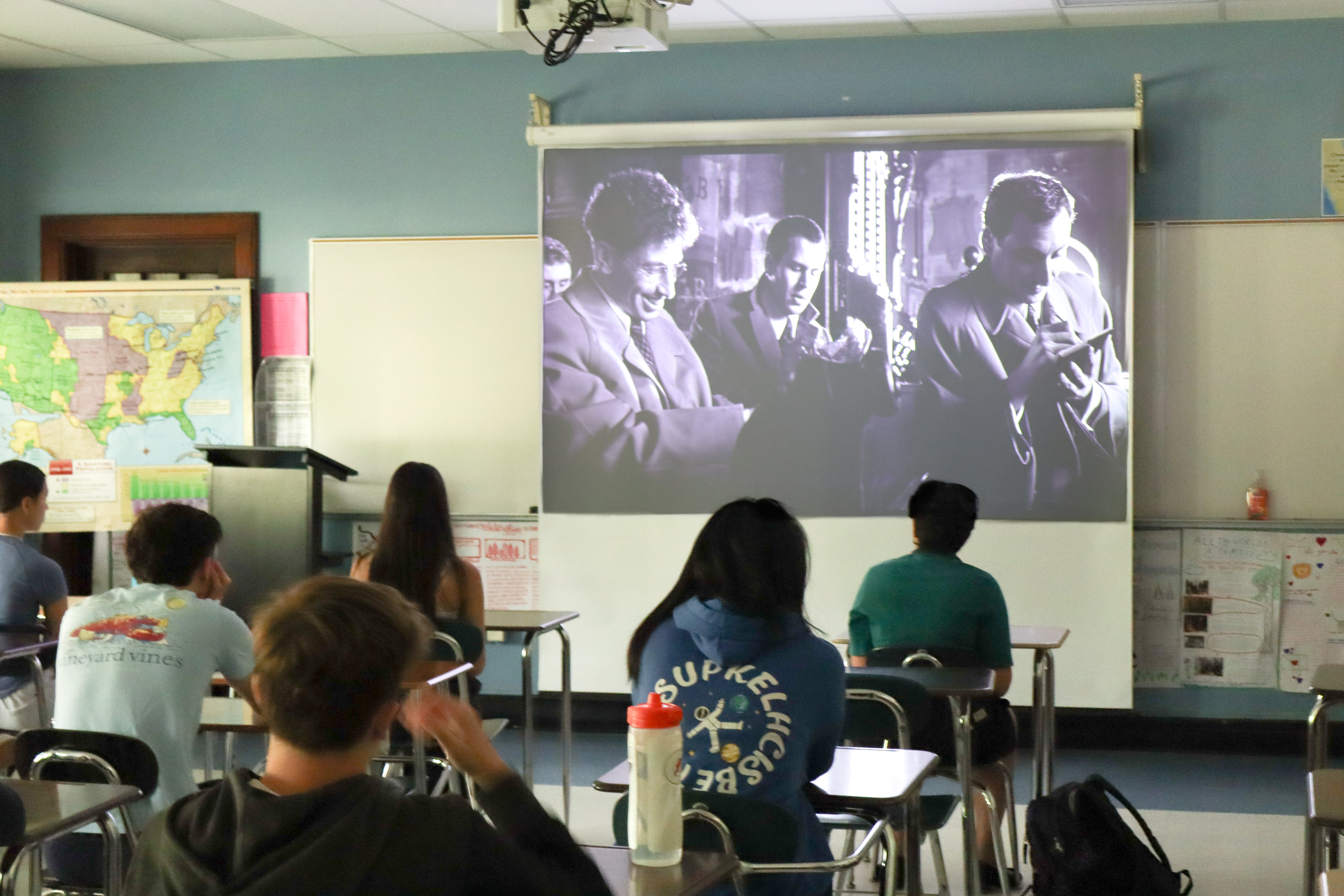Learning history through films
June, 2025
Photo: Katherine Chen
After learning about the Holocaust and WWII, Mr. Campbell’s APUSH Period 2 class watches Schindler’s List.
While most students are introduced to history through textbooks, few recognize the educational value that historical films can provide. Although these films are not always historically accurate, they offer a captivating way to introduce students to the complexities in the past. By recreating stories, movie directors are able to transform historical events into engaging and entertaining experiences, bringing life to events in ways textbooks cannot. While these films may include slight modifications to the original storyline, they provide a powerful passage for students to learn about history’s most fascinating people and events.
One of the most effective ways films can teach history to students is by humanizing real events by providing personal stories. “Black Hawk Down,” for instance — set during the Somali Civil War — follows the crew of a Black Hawk helicopter which was shot down in the Battle of Mogadishu in 1993. The movie plunges students into the chaos of warfare, with soldiers fighting for their lives and losing their loved ones, showing the dangers and troubles of a soldier at battle. This helps students understand the fear that the soldiers faced during the conflict.
Furthermore, in “Selena,” a movie directed by Gregory Nava about Selena Quintanilla-Perez, one of the most famous Mexican American singers in the 20th century, students are able to learn beyond her fame and into her personal struggles. While a famous singer like Selena may appear jubilant on stage, singing and laughing with a big smile, the film sheds light on the discrimination and challenges Selena faces growing up. For example, when Selena and her sister are shopping to buy Selena a dress, they encounter an unpleasant interaction with the sales associate who discriminates against the two sisters because of their skin color. While issues with discrimination may be taught in classes, historical films like “Selena” provide firsthand experience for students to understand the troubles to a greater extent.
Similarly, “Hacksaw Ridge,” a film about Desmond Doss — a U.S. soldier who saved tens of lives during WWII without carrying a single weapon — also provides a powerful depiction of the war and prompts students to engage with the past. This movie not only teaches facts about the war, but also proposes themes like the complexity of heroism and moral conviction. By focusing on Doss, the film teaches students about conscience, faith, and perseverance.
Films also provide opportunities for students to discuss the complexities in history. Take “Schindler’s List,” for example — while it highlights the horrors of the Holocaust, it also raises important questions about morals, courage, and how power in the hands of one can influence the lives of others. The movie encourages students to consider the deeper implications behind the Holocaust, rather than observing from the surface. Teachers can use certain scenes, such as the burning of thousands of books, to spark conversations about broader historical themes such as propaganda, resistance, and consequences of discrimination. Additionally, students are also encouraged to identify what historical details are included — and left out — developing a stronger understanding of how the media portrays history. This not only enhances students’ critical thinking skill, but also their ability to analyze media literature.
In the end, historical films — while not always 100 percent historically accurate — offer a meaningful and engaging way to revisit the past. Through powerful stories and deeper discussions, movies like “Black Hawk Down” and “Schindler’s List” make historical events more accessible and emotionally resonant. When used in educational settings, these films can spark curiosity and encourage critical thinking, turning entertainment into a valuable learning experience.